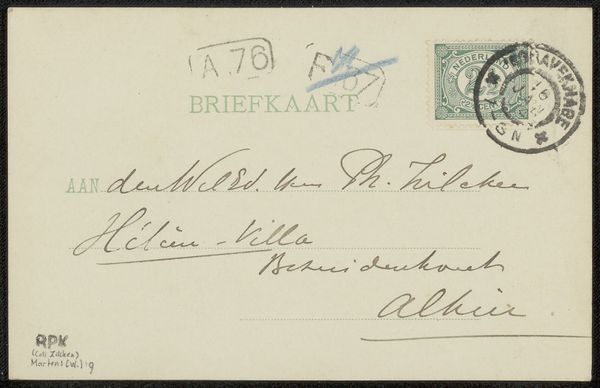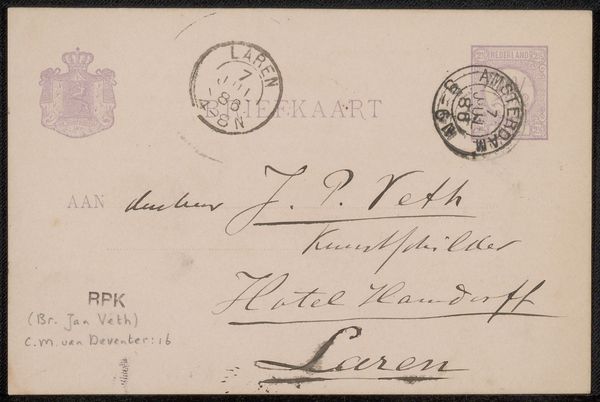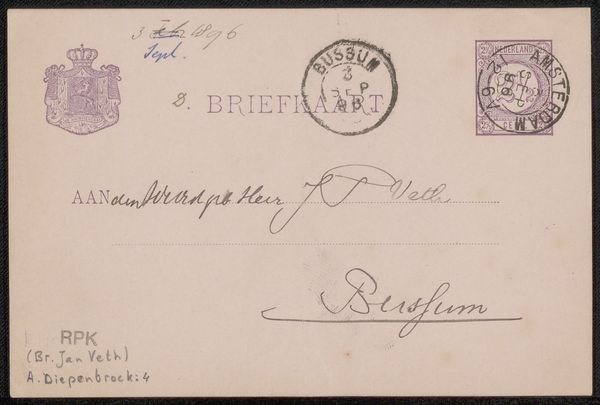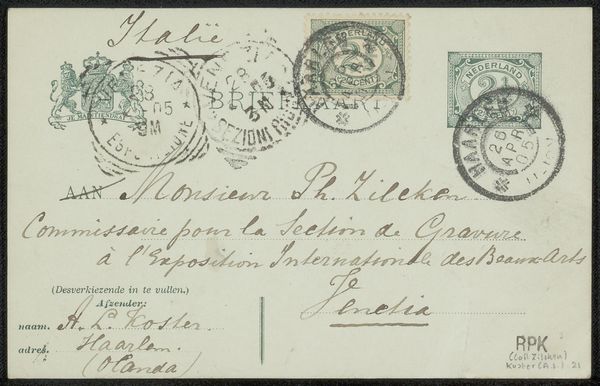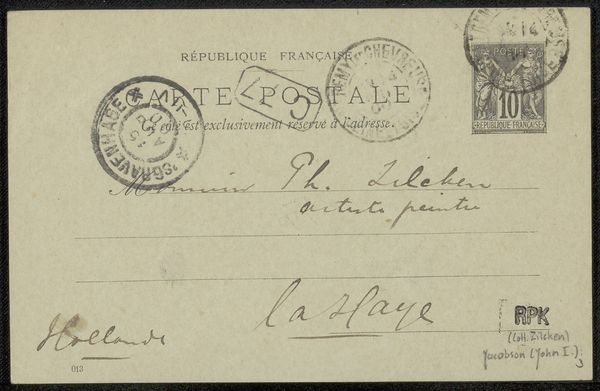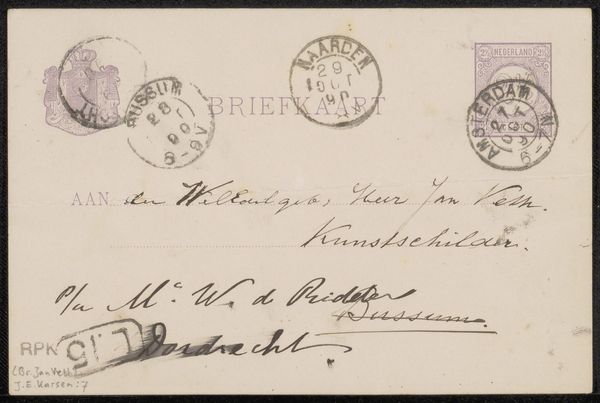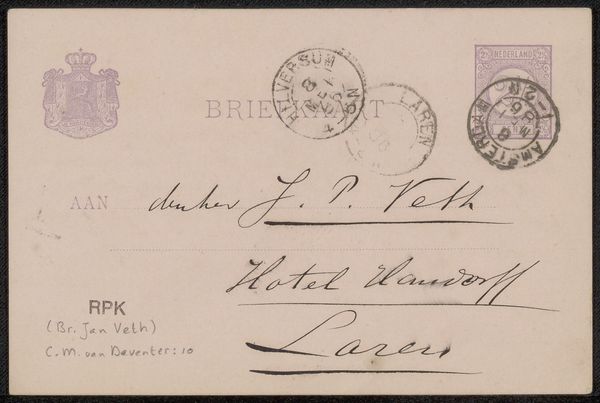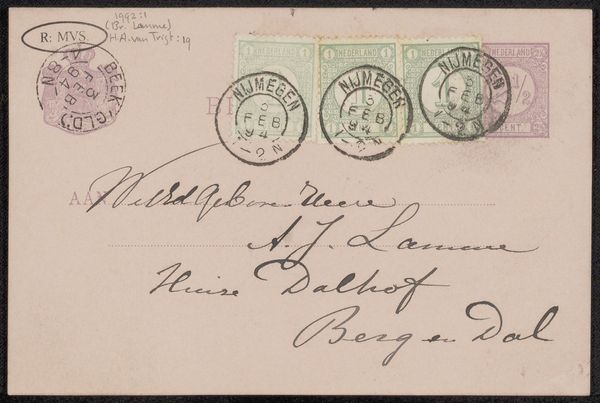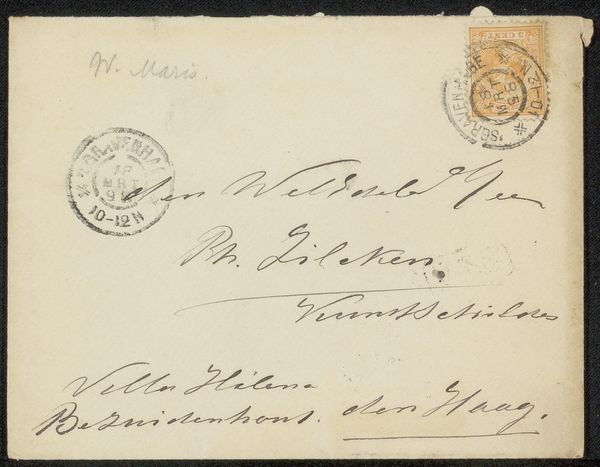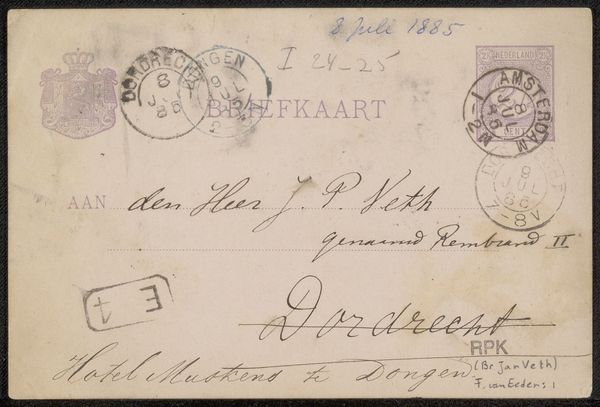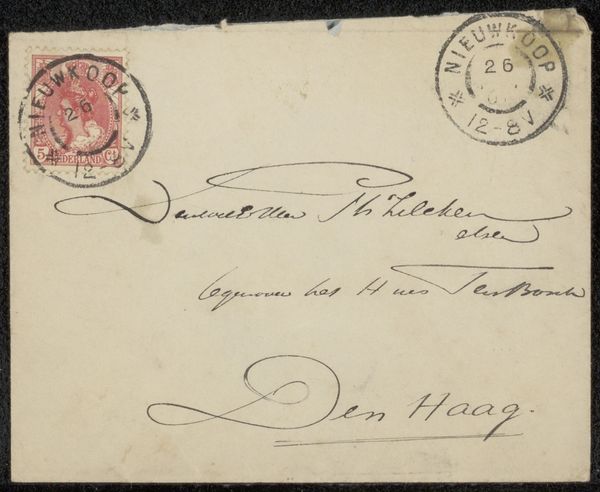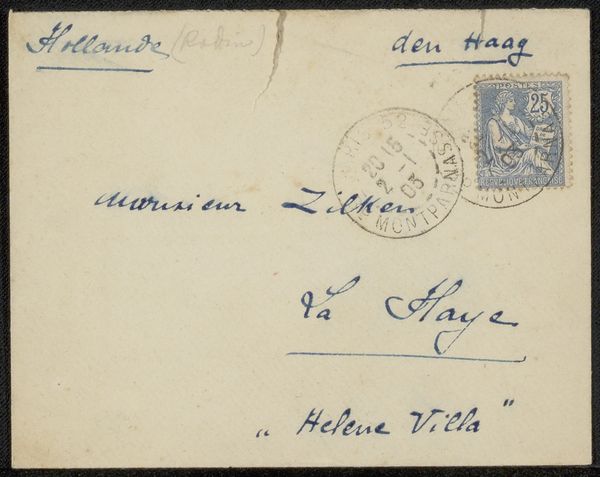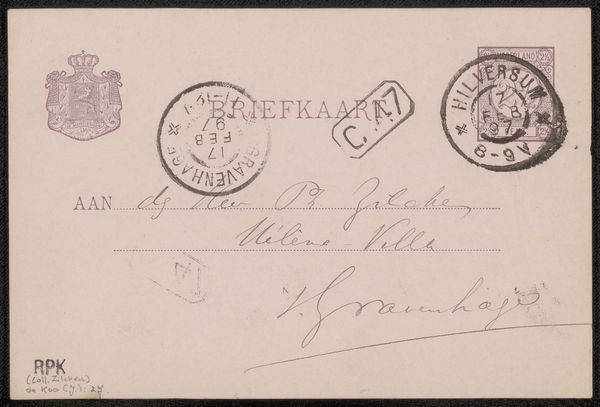
drawing, ink, pen
#
portrait
#
drawing
#
pen drawing
#
ink
#
pen
Copyright: Rijks Museum: Open Domain
Curator: This is a fascinating object, isn’t it? We have here "Briefkaart aan Philip Zilcken," a pen and ink drawing by Albert Baertsoen, likely dating from before 1893. It’s part of the Rijksmuseum collection. Editor: Yes, my immediate impression is one of intimacy and distance somehow intertwined. It’s such a personal item—a postcard—yet the script is faded and formal, evoking a sense of history that simultaneously connects and separates us from its moment. Curator: Absolutely. The structure is simple; rectangular form, defined space for postage at the top, followed by the inscription zone. The stamps themselves, their placement and the cancellation marks disrupting their pristine design, create their own micro-narrative within the larger composition. Editor: The imagery of the stamps adds another layer, wouldn't you agree? Each contains a heraldic lion—the Belgian lion—surrounded by elaborate floral filigree. This emblem, so powerful and sovereign, contrasts oddly with the rather quotidian purpose of sending a simple message. Curator: A tension between the universal and the particular, perhaps. We see the address, “Heleen Villa, Bezuidenhout, La Haye”. The script suggests speed and immediacy of writing—practical marks before content. Editor: I also note the stamps themselves: multiple, similar iterations grouped closely together. This redundancy almost seems to amplify the message itself, underscoring a desire for the note to be received or taken seriously. The single contrasting green stamp, almost as an afterthought, stands as unique visual element to this artwork. Curator: And we can interpret the accumulation of these small administrative markings—the postage, the cancellation marks—as representative of a larger network of communication and authority. Its impact on that area is one of pure function disrupting the composition. Editor: It really is intriguing how something so functional—a discarded envelope—becomes such a compelling object when viewed through the lens of time. Looking at the historical implications alone of a note of correspondence between two parties so long ago... it makes you wonder the context of that time in Brussels in comparison to where the work resides now, in the Rijksmuseum. Curator: Indeed. We are left contemplating the echoes of interpersonal exchange captured within the materiality of this card, brought to life by its aesthetic and conceptual weight. Editor: An unassuming artifact of transient communication transformed into a durable vessel of cultural memory and insight, reminding us how the simplest of objects can embody surprisingly profound historical and artistic resonances.
Comments
No comments
Be the first to comment and join the conversation on the ultimate creative platform.
